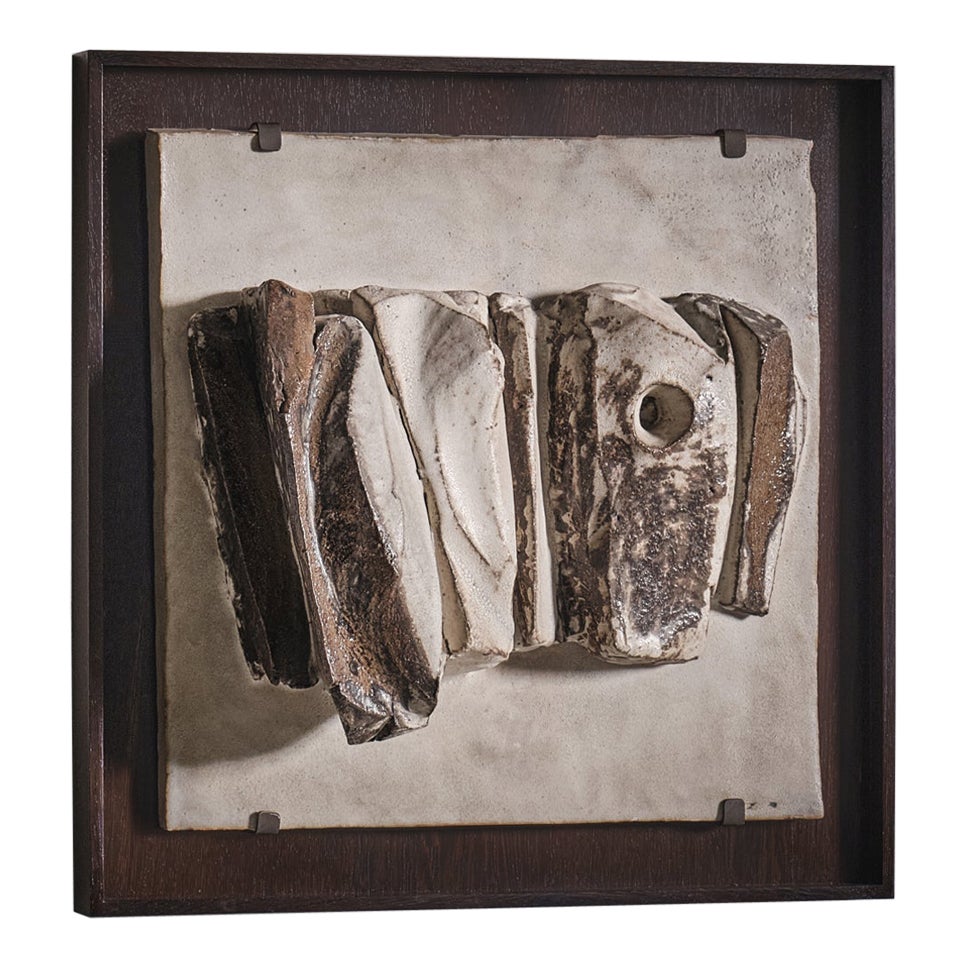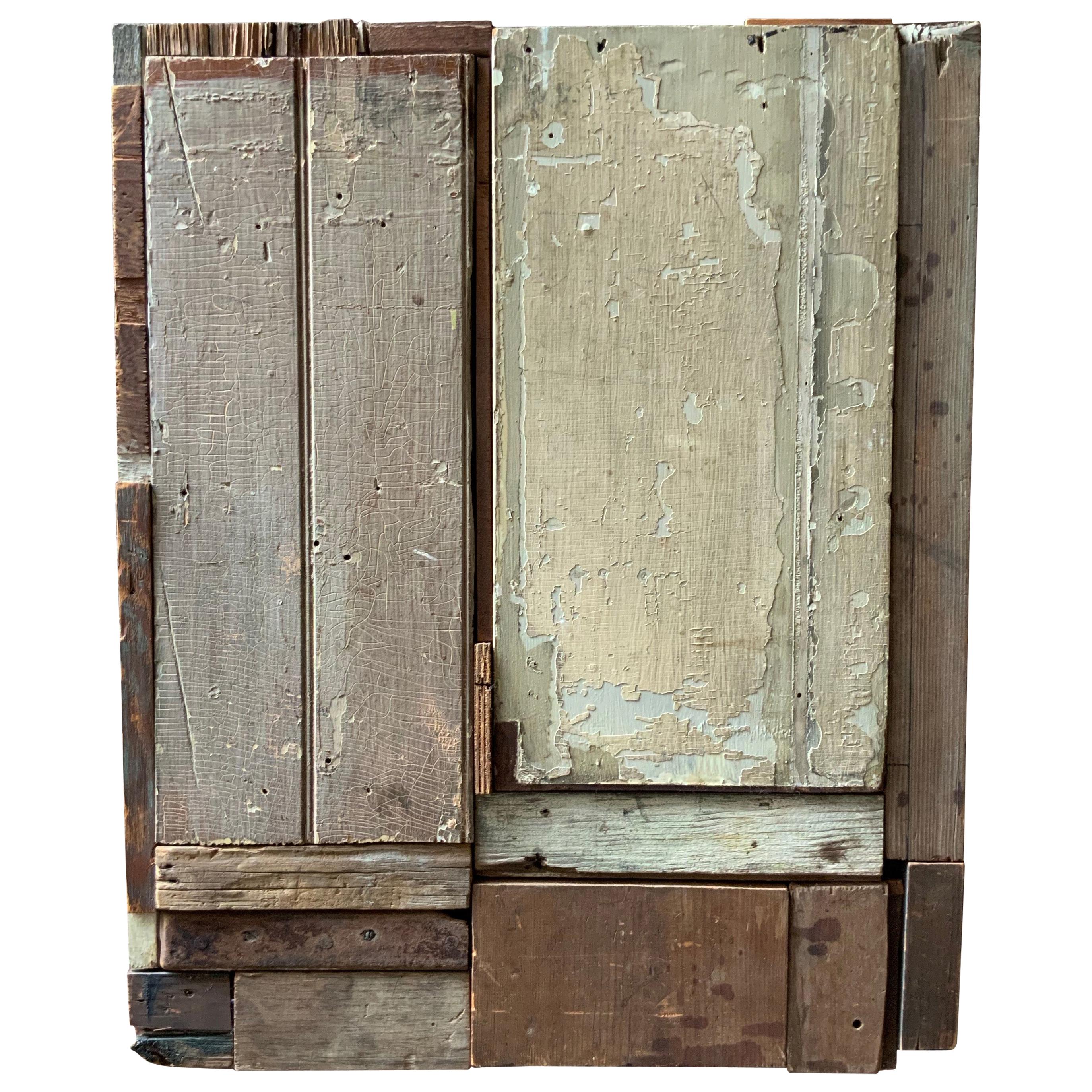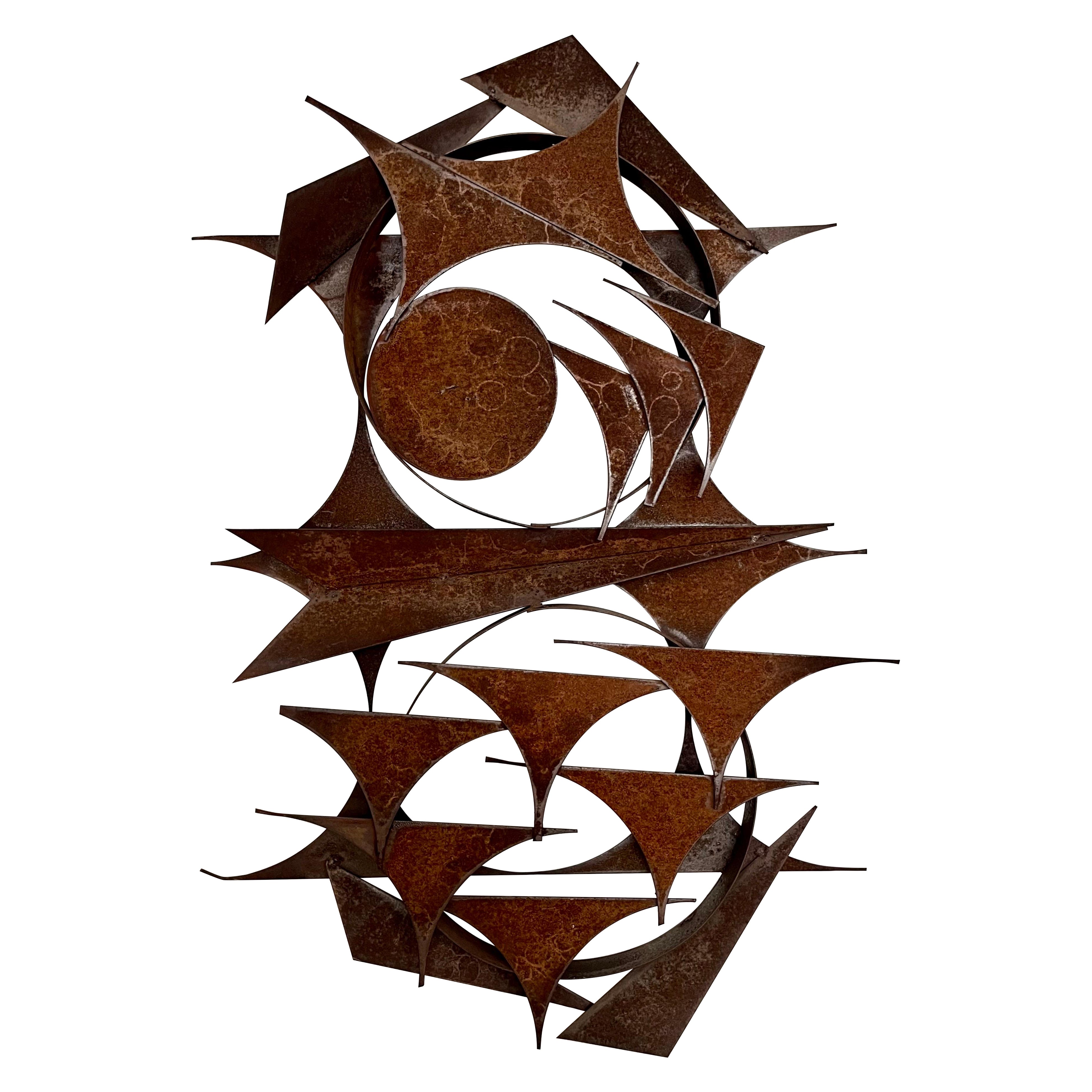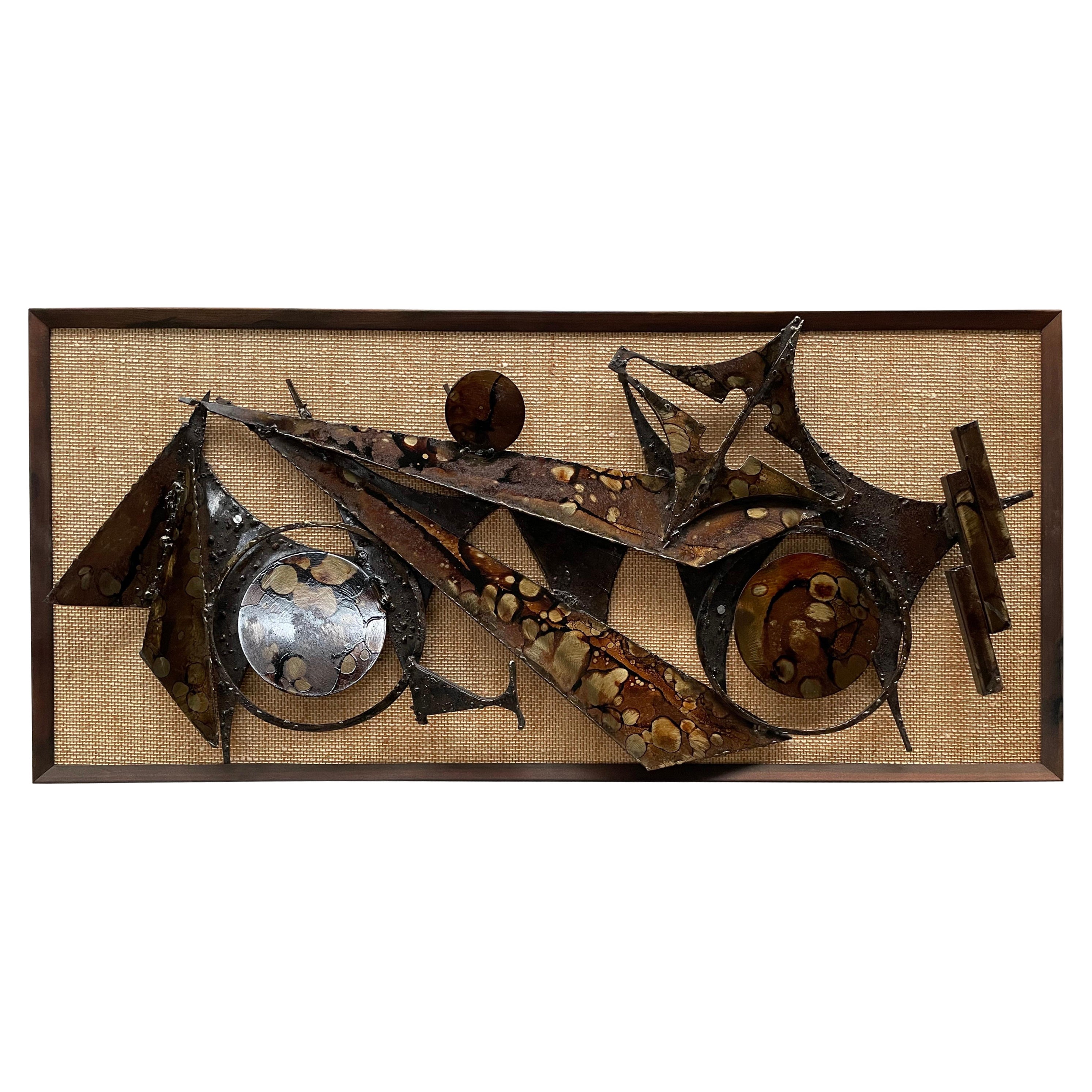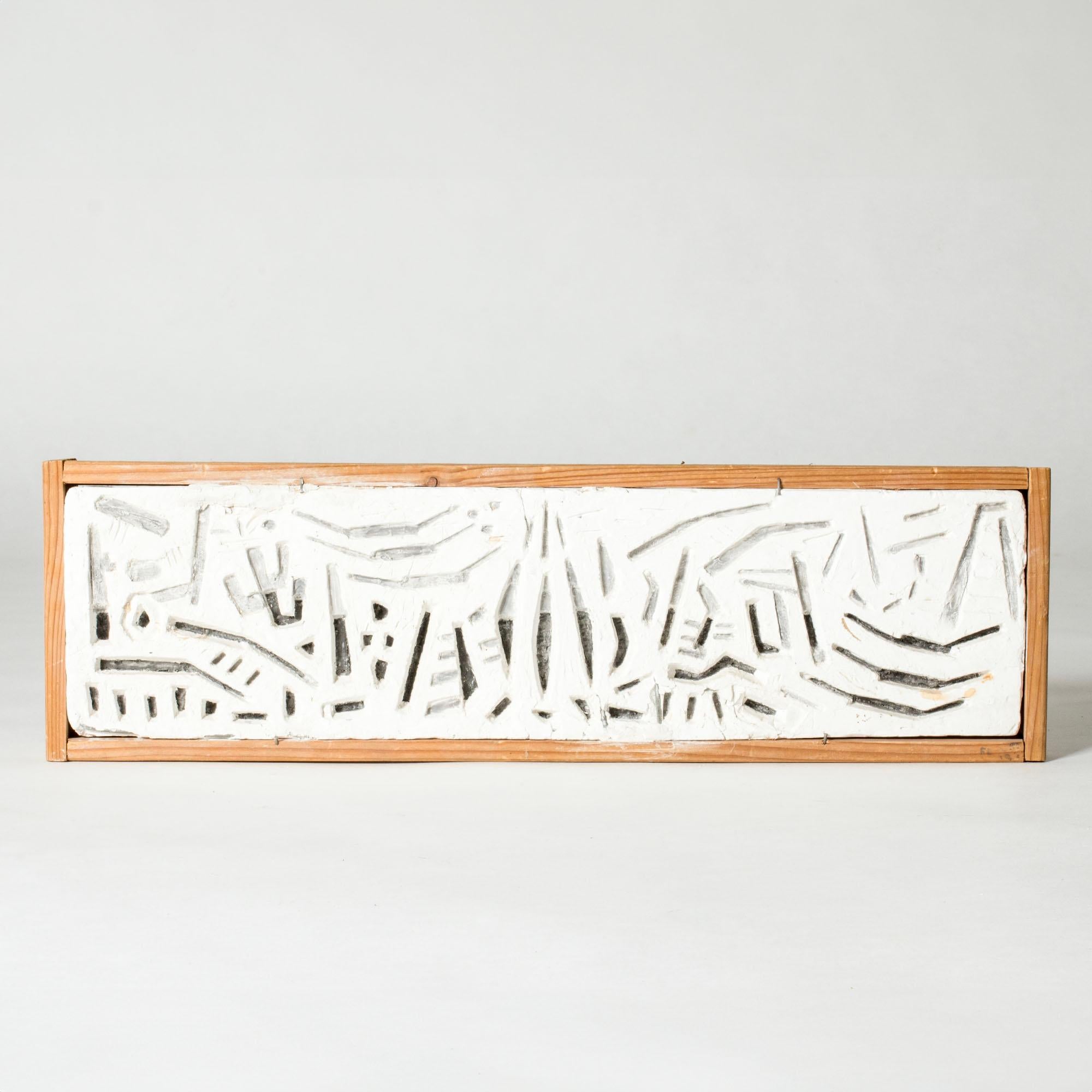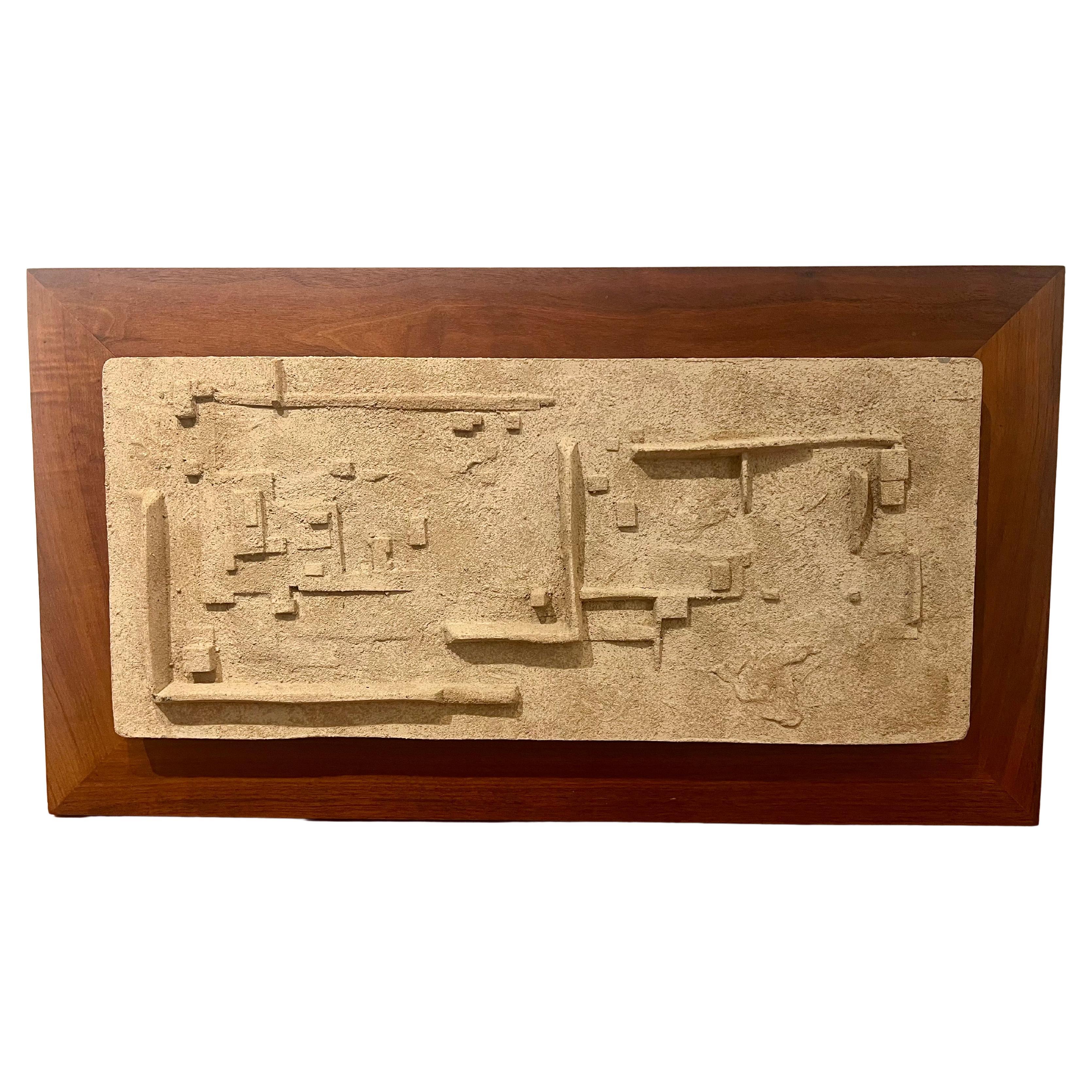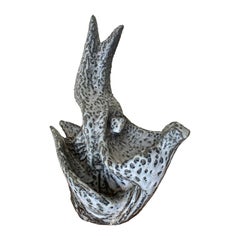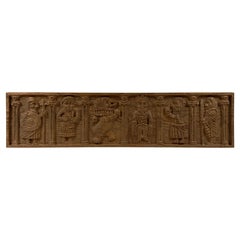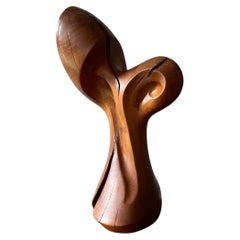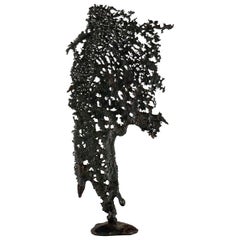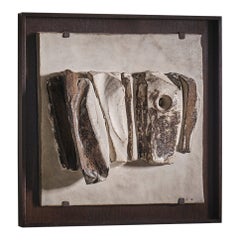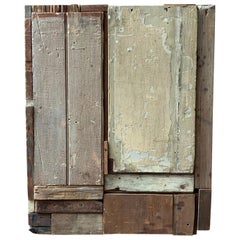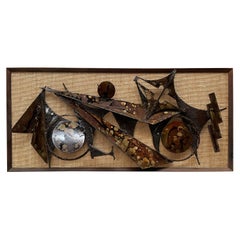Items Similar to Early 1960s Teruo Hara Stoneware Wall Sculpture for Design Technics
Want more images or videos?
Request additional images or videos from the seller
1 of 10
Early 1960s Teruo Hara Stoneware Wall Sculpture for Design Technics
$8,500
£6,394.04
€7,407.20
CA$11,983.24
A$13,326.16
CHF 6,994.45
MX$162,506.15
NOK 88,396.03
SEK 82,874.80
DKK 55,286.42
About the Item
A rare, early 1960s stoneware Wall Sculpture by famed Japanese-American potter Teruo Hara for Design Technics. Signed on the lower right with Hara's TH chop mark along with the DT chop mark. This work was likely part of a joint exhibition of Hara's and Lee Rosen's ceramic murals that was held at the Design Technics showroom in Manhattan in the Fall of 1962.
The following article on Hara was clipped from the Nov./Dec. 1962 issue of Craft Horizons.
In the United States before World War II the utility of ceramics overshadowed aesthetic considerations relegating the potters art to a minor position. This western dualism between function and design has never existed in Japan where art is philosophically inseparable from any human activity. But in the West, it was only in the late 1940’s in a world rapidly becoming more mechanized and innundated with mass produced goods that the hand-crafted pot surpassed function and took on its own value.
For centuries in Japan beautifully hand-crafted ceramics had been integral in the tea ceremony and flower arrangement, but the vocabulary of forms had become ritualized so that there was little opportunity for an artist to supercede the traditional with new ideas.
Teruo Hara was one of a generation of young artists who challenged these traditional forms. After a liberal arts education Hara first practiced industrial design and architecture before becoming interested in ceramics. He was a member of the Crafts Group of Japan, comprised of industrial designers, artists, architects and critics who sought to find a new standard of expression. In this milieu Hara became a master of his craft while he explored new design concepts. By 1958 he began to feel that his real opportunity lay in America. Earlier, he had been criticized in Japan for his innovation and he sought greater freedom. Under the auspices of the Fine Arts Committee and the American Craftsmens Council, he came to tour the United States and work with American potters. He was particularly excited by the freedom with which such West Coast potters as Peter Voulkos and Paul Soldner worked, but he felt on the other hand that there was too great an importance placed on experiment and originality for its own sake at the expense of quality.
Hara is unique in having worked ten years in Japan and ten in the United States. He is able to draw freely from both traditions. Shortly after he arrived in this country, he had a one-man show in New York, but even though this was well received, he realized he lacked knowledge of the ceramic materials and technology available in the United States—that he needed time for study. He went to work for Design Technics in Stroudsburg, Pennsylvania developing clay bodies, glazes, kilns, and designing wall plaques for architectural use. This was also a period of adjusting to the language and customs of his new country.
By 1963, he felt ready for another New York exhibition, and once again was received with acclaim. He was described as “Creating compositions which combine the understatement of Oriental concepts with the vigor and excitement of the best in U.S. ceramics . . . Teruo Hara emerges here as one of the most interesting potters on the East Coast. His own outlook was summed up in his statement:
The craftsman in the United States today faces a happy future, for Americans are recognizing more and more the value of hand craftsmanship in our increasingly mechanized world. There exists in this country freedom to see and evaluate the work and trends of all nations and to incorporate its vigor and freshness. The craftsman is no longer confined to mere repetition of colloquial traditional forms. With this freedom and inspiration, the craftsman must develop a new tradition—and to do so he must be willing to draw from painting, sculpture, and architecture.
Having learned the mechanics of American ceramics and having reveled in the great freedom in this field, Hara was able to begin to reassess the traditional oriental pots. He moved to Warrenton, Virginia, and living in relative isolation spent a great deal of time studying classic pots, becoming more aware of the values he had rejected in his youth. He began to once again sense the beauty in the simple wheel-thrown and hand-built forms and realized that violent expression was contrary to his basically poetic sensibility. His work became simpler, characterized by a sculptural quality in which volume and movement were unified. He returned to the use of ancient glazes of copper red, celadon, temmoku and ash. As a mature artist, he was able to handle the means he had largely rejected as a youth, but now he was fully competent to evaluate the early techniques and traditions and to select what was pertinent for his own aesthetic expression. Although he returned to classic forms, his pots retained a spontaneity, individual flavor and freshness. He echoed, but did not imitate, the achievements of his artistic ancestry.
The artist’s most recent works are wheel-thrown, simple and quiet in form. A plate is never perfectly round for it must have its own individual life—bottles are never symmetrical but contain subtle movement. The highly refined glazes are applied to enhance the forms, to fit the need of the shape and to create a sensuous immediacy.
He recognizes that he faces the danger of becoming trapped in this strict and limited world of beauty. Even though he feels his current work brings a unity to his life, having come full circle after twenty years, he is ready to once again review his position to “see if there is anything he has missed.”
One hopes that he will continue making his quietly beautiful pots; in a complex world where messages are shouted, their simplicity speaks softly but eloquently for this twentieth century artist who has distilled his own aesthetic by means of a return to the classic.
Craft Horiions, November-December, 1962.
- Creator:Teruo Hara (Artist)
- Dimensions:Height: 20 in (50.8 cm)Width: 35.25 in (89.54 cm)Depth: 2 in (5.08 cm)
- Style:Mid-Century Modern (Of the Period)
- Materials and Techniques:
- Place of Origin:
- Period:
- Date of Manufacture:1960s
- Condition:Wear consistent with age and use.
- Seller Location:Southampton, NJ
- Reference Number:Seller: Jonathan 1stDibs: LU1566245514322
About the Seller
4.9
Platinum Seller
Premium sellers with a 4.7+ rating and 24-hour response times
Established in 2010
1stDibs seller since 2015
779 sales on 1stDibs
Typical response time: <1 hour
- ShippingRetrieving quote...Shipping from: Clark, NJ
- Return Policy
Authenticity Guarantee
In the unlikely event there’s an issue with an item’s authenticity, contact us within 1 year for a full refund. DetailsMoney-Back Guarantee
If your item is not as described, is damaged in transit, or does not arrive, contact us within 7 days for a full refund. Details24-Hour Cancellation
You have a 24-hour grace period in which to reconsider your purchase, with no questions asked.Vetted Professional Sellers
Our world-class sellers must adhere to strict standards for service and quality, maintaining the integrity of our listings.Price-Match Guarantee
If you find that a seller listed the same item for a lower price elsewhere, we’ll match it.Trusted Global Delivery
Our best-in-class carrier network provides specialized shipping options worldwide, including custom delivery.More From This Seller
View AllMidcentury Lee Rosen for Design-Technics Brutalist Figural Stoneware Sculpture
By Lee Rosen
Located in Southampton, NJ
A mid-1960s Lee Rosen for Design-Technics brutalist, figural stoneware sculpture. The sculpture is fully signed "LEE" with the DT cipher. The work features two figures, one of which ...
Category
Mid-20th Century American Organic Modern Figurative Sculptures
Materials
Ceramic, Clay, Stoneware
Carved Oak Wood Panel by Evelyn Ackerman ERA Industries
By Evelyn Ackerman
Located in Southampton, NJ
A beautiful and rare dark oak carved panel by renowned artist Evelyn Ackerman for ERA Industries. Marked “EA” in the lower right corner and stamped “ERA Industries” on the back, this...
Category
Late 20th Century American Mid-Century Modern Wall-mounted Sculptures
Materials
Oak
1970s Modernist Freeform Wood Sculpture in Walnut
Located in Southampton, NJ
Organic modern freeform wood sculpture signed C. Hubert. This piece is constructed of a single piece of wood (species unknown). The sculpture is unique from all sides and can be floa...
Category
Antique Mid-19th Century American Mid-Century Modern Abstract Sculptures
Materials
Wood
Organic Steel Sculpture with Pedestal Base
Located in Southampton, NJ
Steel organic sculpture with pedestal base in the style of Philippe Buil.
Category
20th Century Unknown Organic Modern Abstract Sculptures
Materials
Steel
Robert Maxwell and David Cressey, 'Flower' Planter
By Robert Maxwell and David Cressey
Located in Southampton, NJ
This stunning Robert Maxwell & David Cressey floral motif vessel embodies the earthy, organic aesthetic that defines Earthgender Ceramics. Crafted in California in 1977, this glazed ...
Category
20th Century American Mid-Century Modern Planters and Jardinieres
Materials
Stoneware
Curtis Jere Brass and Turquoise Starburst
By Curtis Jeré
Located in Southampton, NJ
Beautiful and Unique metal sunburst by Curtis Jere.
This stunning piece is truly a showstopper.
Brass and Turquoise make a beautiful contrast.
37 x 37 x 6.5Deep
Category
Vintage 1980s American Brutalist Metalwork
Materials
Metal
You May Also Like
Ceramic wall relief by Carlo Zauli, Italy 1960s
By Carlo Zauli
Located in Rotterdam, ZH
Unique sculptural ceramic wall relief by Carlo Zauli (Faenza 1926–2002), Italy, 1960s. Exceptional and expressive amorphous-shaped relief in the beautiful signature "Bianco Zauli" co...
Category
Vintage 1960s Mid-Century Modern Decorative Art
Materials
Ceramic, Wenge
Norman Conn '1932-2003' 1961 Mixed-Media Construction #5
By Zbyněk Sekal 1, Norman Conn, Louise Nevelson
Located in Garnerville, NY
Wonderful mixed-media by Norman Conn (1932-2003), circa 1961. Signed verso and bearing a D'Arcy Gallery, NYC label. Very good condition. Perfectly weathered and masterfully assembled...
Category
Vintage 1960s American Brutalist Wall-mounted Sculptures
Materials
Metal
$1,516 Sale Price
20% Off
Large Brutalist Wall Sculpture by Henrik Horst, Denmark, 1970s
By Henrik Horst
Located in Frederiksberg C, DK
Large Brutalist Wall Sculpture by Henrik Horst, Denmark, 1970s
Large and striking wall sculpture by Danish artist Henrik Horst, crafted in the 1970s. Executed in rusted iron, the pi...
Category
Vintage 1970s Danish Brutalist Wall-mounted Sculptures
Materials
Metal, Iron
Brutalist Wall Sculpture, Danish Art, 1970s
By Henrik Horst
Located in Copenhagen, DK
Brutalist wall sculpture designed and manufactured by the Danish artist Henrik Horst, circa 1970s. Patinated metal construction mounted on a frame of wood.
Category
Vintage 1970s Danish Brutalist Mounted Objects
Materials
Metal
Modernist Wall Relief by Fred Leyman, Sweden, 1960s
By Fred Leyman
Located in Stockholm, SE
Striking wall relief by Fred Leyman, with an abstract, graphic pattern in plaster. Mounted in a rustic pine frame.
Category
Vintage 1960s Swedish Scandinavian Modern Wall-mounted Sculptures
Materials
Plaster, Wood
1970's Mix Media Brutalist Abstract Wall Relief by Hari Van Hoeffen Signed
Located in San Diego, CA
Hari Van Hoeffen, an American architect, engineer, and artist, was based in St. Louis during the mid-20th century. His work often included mixed media sculptures with abstract archit...
Category
20th Century American Brutalist Wall-mounted Sculptures
Materials
Resin, Walnut
More Ways To Browse
Japanese Celadon
Vintage Face Pot
Sake Bottle
Pennsylvania Stoneware
Japanese Sake Bottles
Japanese Ceramic Sake Bottle
Japanese Ceramic Tea Pot
Vintage Japanese Sake Bottle
Peter Voulkos Plates
Vintage Copper Flower Pots
Paul Soldner Pottery
Sake Pot
Voulkos Tea
Antique Measuring Tapes
Antique Military Helmets
Antique Tape Measure
Bell Boat
Blonde Art Deco Furniture
